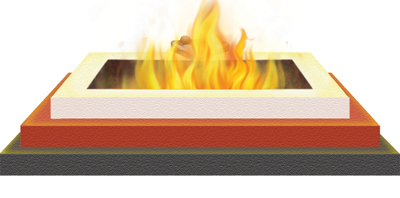
| Ideal | Current situation | |
| 1. Spiritual emotion (%) | 30 | 0 |
| 2. Pronunciation (%) | 70 | 30 |
| Overall effect (%) | 100 | 30 |
– Paratpar Guru Dr. Athavale
1. Six essential qualities required
in a student learning recitation of Vedas
माधुर्यमक्षरव्यक्तिःपदच्छेदस्तुसुस्वर: ।
धैर्यंलयसमर्थंच षडेते पाठका गुणा: ॥ – पाणिनीय शिक्षा
Meaning:
-
Softness in voice (don’t recite in hoarse voice).
-
Clear pronunciation (people present at the venue should be able to hear each and every letter uttered).
-
Pause at the correct place (while reciting, the mantras should be broken at predefined places only).
-
Use melodious tone (use correct tone at appropriate places).
-
Courage (without faltering, one should recite with full confidence and in a clear voice).
-
Use of correct pace (the pace and pitch with which one starts reciting the mantra, should be maintained till the end).
2. Incorrect method of reciting Vedas – six faults of the learner
गीती शीघ्री शिर: कम्पी तथा लिखित पाठकः ।
अनर्थज्ञोऽल्पकण्ठश् च षडेते पाठकाधमाः ॥
Meaning
-
Reciting mantras in form of a song.
-
Reciting mantras in a speedy manner.
-
Moving or nodding the head while reciting the mantras in high or low pitch.
-
Reading out the mantras from the holy text (it is expected that the mantras should be by-heart).
-
One should not make use of the mantras without understanding their meaning.
-
Reciting mantras in a very low voice.
स्थाणुरयं भारहारः किलाभूत, अधीत्यवेदं न विजानातियाऽर्थम् ।
याऽर्थज्ञ इत् सकलं भद्रमश् नुते नाकमेति ज्ञानविधूत पाप्मा ॥
Meaning : One reciting Veda mantras without understanding their meaning is equivalent to a dried tree devoid of any leaves, flowers and fruits. It only bears its own weight and is like a pillar. One who understands their meaning becomes eligible to obtain auspicious things, liberates self from the sins and ascends to the higher regions by the virtue of his knowledge.

 Yajna has a positive effect on people and the environment : Research findings
Yajna has a positive effect on people and the environment : Research findings Mokshaguru Paratpar Guru (Dr.) Athavale, restoring the culture of Yajna !
Mokshaguru Paratpar Guru (Dr.) Athavale, restoring the culture of Yajna !